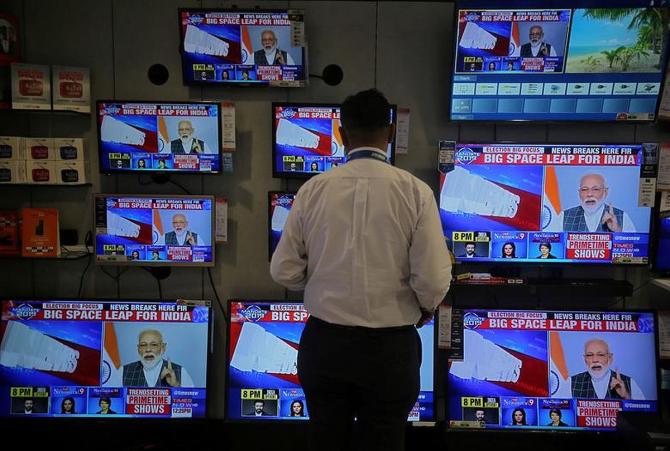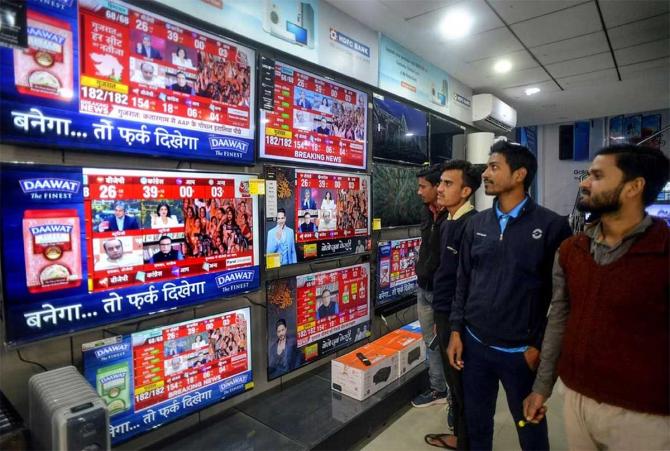The cost of open cells has seen an average increase of between 3 and 20%, and is higher for larger screen TVs in July, according to manufacturers of televisions
Television (TV) manufacturers will increase prices by up to another 10 per cent in August due to rising costs of open cells, a key component in TV production.
Since the beginning of 2023, the prices of open cells are on the rise, nudging manufacturers to raise their prices accordingly.
The cost of open cells has seen an average increase of between 3 and 20 per cent, and is higher for larger screen TVs in July, according to manufacturers of televisions.
Open cells constitute 60 to 65 per cent of the overall manufacturing costs for televisions.
Up until June, the cost of open cells had already risen by 15 to 17 per cent. This is an additional burden that manufacturers are grappling with.
This price surge is attributed to the consolidation of four to five panel manufacturers in China.
“There has been a minor increase in open cell prices and are now up by 3 to 5 per cent,” Atul Lall, managing director at Dixon Technologies, told Business Standard.
Dixon Technologies, being a contract manufacturer, transfers the entire price increase onto its clients. Lall said the prices of open cells should stabilise within a month.
Super Plastronics, a Kodak brand licensee, also plans to increase the prices of its television sets by 10 per cent towards the end of August.
“The problem arises because of our dependence on one country for the supply of open cells. The production is dominated by four players, which is why prices are rising,” said Avneet Singh Marwah, director and chief executive officer, Super Plastronics Private Limited.He has witnessed that the average price increase is around 20 per cent.
“The television industry will frequently face such sudden price surges as the dependency for panels is primarily on one specific country,” said Marwah, adding that the prices of open cells had been rising every month, to the tune of 10 to 20 per cent.
In the past six months, panel prices have shot up by around 50 to 70 per cent, with a further increase of approximately 6 to 10 per cent in the previous month, said Arjun Bajaj, director at Videotex International.
As a result, the production costs have spiraled, leading to a surge in the final product’s price.
“Depending on the size of the TV, the price of televisions may be raised by at least 5 to 10 per cent,” Bajaj said.
Videotex International is an original equipment manufacturer and original design manufacturer and smart TV maker for brands such as Lloyd, Realmi, Toshiba, Hyundai, BPL, Vise, and Daiwa.
Videotex International has adopted several strategies to deal with the challenges posed by increasing production costs.
“We have optimised and tightened our supply chain to minimise inefficiencies and bring down costs. Building solid supplier partnerships has been crucial in obtaining better terms, more favourable pricing, and enhanced collaboration. Through the emphasis on Inventory Management, we aim to mitigate the impact of price fluctuations and ensure a stable supply of components,” he said.
Due to the increase in raw material prices, the company has increased its inventory, which has subsequently raised its overall working capital, enabling the company to provide better prices to brands and pass on the price benefits to them.
“These measures have become essential to adapt to the challenging market conditions and sustain our business amidst the unprecedented price disruptions in the panel industry,” Bajaj said.
Feature Presentation: Rajesh Alva/Rediff.com
Source: Read Full Article
-
Ascend Labs Recalls Oral Anticoagulant Dabigatran Etexilate Capsules
-
Los Angeles City Council President Faces Calls To Resign After Leaked Conversation Reveals Racist Remarks; Others Also Urged To Step Down
-
Drake Gives DJ Khaled A Gift That Keeps On Giving
-
Earnings Wrap for Wednesday, November 23
-
How to Gradually Build Wealth Using Passive Investing



